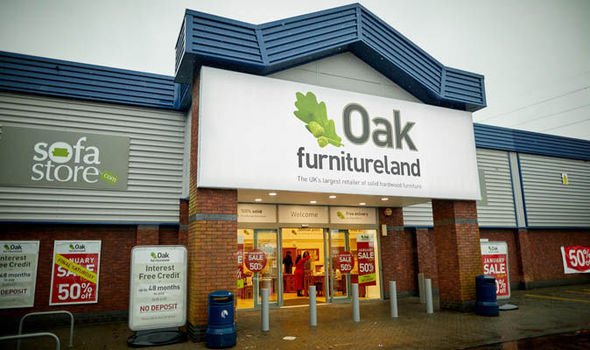
Disclaimer: As an Amazon Associate, “Furniture UK” earns from qualifying purchases.
For the last 150 years and counting, John Lewis has been operating across Great Britain as one of the most recognisable department stores in the upmarket segment. The John Lewis Partnership owns the company and has maintained the same slogan since 1925. The Partnership owns 46 stores around Wales, Scotland and England, York and Exeter’s flexible formats and a dozen At Home stores.
John Lewis – Since 1864
In 1864, the first flagship John Lewis store opened along London’s Oxford Street, operating a drapery shop. The founder, John Lewis, acquired a second store in London’s Sloane Square, Peter Jones. In 1920, John Lewis Partnership was founded by John Spedan Lewis, the store chain founder’s son. Spedan came up with the idea after his days managing the Peter Jones store, including a Gazette that would be the in-house magazine of the Partnership published in 1918 for the first time.
The first store for the Partnership outside the English capital came in 1933 through the establishment of Nottingham’s Jessop & Son, which rebranded as John Lewis almost 80 years later in 2002. By 1940, the Selfridge Provincial Stores became a part of the Partnership, which included 15 local and suburban department stores, namely Watford’s Trewins, Cambridge’s Robert Sayle, Liverpool’s George Henry Lee, Sheffield’s Cole Brothers and Southsea’s Knights & Lee. All stores are trading over 85 years later and have rebranded as the iconic John Lewis, except for Knight & Lee, which still maintains its title. Windsor’s Caley’s was a part of the Partnership before closing shop around 2006.
In 1949, the London branches of John Lewis included Bon Marche, John Pound, John Barnes and Peter Jones, while the provincial departments of the Partnership comprised Cambridge and Peterborough’s Robert Sayle, Southampton’s Tyrell and Green and Weston-super-Mare’s Lance and Lance Limited. In Newcastle, Edinburgh and Hull, the store chain operated silk shops.
Heelas, a department store in Reading, was adopted by the Lewis group in 1953 and changed its name in 2001 to John Lewis. Within the same year, Herbert Parkinson was bought by the Lewis Partnership 1953, a textile manufacturer and remained a top Lewis maker of furnishings, pillows and duvets.
Before the 1994 relaxation of trading laws on Sundays in the UK, the Partnership closed all branches on Mondays to give employees a much-needed weekend of two days.
Over the years, the group has seen significant investments. One was Peter Jones’s renovation by 2004 for £107 million. Lewis has not lost its beginnings around Oxford Street, and the original shop location is still a significant part of the Partnership, where the largest and flagship branch of the group is located. The building was completely refurbished by 2007 for £60 million introducing a new restaurant, cafe and brassiere within the Lewis store.
Lewis branches
The Lewis group had 42 operating department stores across by June 2014 across the UK. While 31 are generally traditional department store types, At Home Lewis stores are about 10. Of all the stores in the Partnership, the Oxford Street Store of 1864 remains its largest.
At John Lewis Home store format was announced by the group in 2009, with the first opening by October of the same year in Poole. At Home, Lewis stores are domiciled in current shopping regions and mainly focus on Technology, Home and Electrical items. The Poole store opened on October 22nd 2009, at Branksome’s retail park at the Commerce Centre.
As a result of the At Home Lewis store’s success in Poole, the group opened other At Homes in different regions outside the traditional Lewis stores. Homes can be found in Swindon, Chester, Tamworth, Tunbridge Wells and Croydon. In the spring of 2012, other stores were opened in West Sussex, Chichester and Newbury and by November, another opened in Ipswich.
Sales performance
The John Lewis Partnership reported year sales by January 30th 2016, stood at £11 billion, representing a 0.7 per cent increase on the previous financial year. John Lewis retailer’s sales stood at £4.56 billion, representing an increase of 2.8 per cent on the last year’s results. Waitrose Sales, on the other hand, stood at £6.5 billion, a dip of 0.7 per cent. Operating profits at Waitrose dipped by two per cent to £232.6 million, while John Lewis retailer saw a 0.1 per cent increase to £250.2 million. Lewis Group enjoyed £305.5 million in pre-tax profits.
At the same time, the retailer indicated that 33 per cent of its merchandise sales happened on the web and 67 per cent in its stores. 53 per cent of online orders were largely click-and-collect, which had grown by 11 per cent. Orders collected from Waitrose stores increased by 19 per cent. Mobile device sales shot up by 34 per cent, with Smartphones making up a considerable chunk of this, growing by 86 per cent. The scheme, my John Lewis, also saw a growth of 32 per cent in terms of membership to 1.8 million.




![Report on the British educational furniture manufacturers group [BEFMG]](https://thehome.co.uk/wp-content/uploads/2018/02/report-furniture-uk.jpg)



